Circuit-Zone.com - Electronic Projects
Posted on Tuesday, April 5, 2011 • Category: USB Interface Adapters
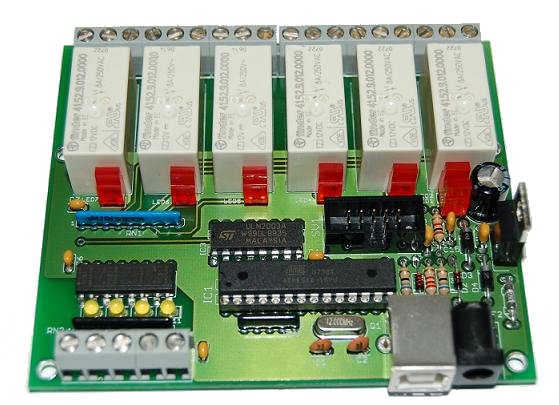
Here's the new 6 channel USB relay card for switching different appliances, lamps or motors by a computer program via the USB interface. There are certain switching sequences can be programmed via computer. The card was dispensed on SMD technology and is thus the ideal craft project for beginners and novices. Those who do not always wanted with his computer what Steruern. This can be done with the help of a web application even over the Internet. About the SPI connector could even imagine the relay card to cascade with other relay boards.
The relays max. 250V AC and have a switching current of 8A (depending on the used relay). Furthermore also 4 inputs, which are separated optocouplers, and monitors can be queried. AVR simulates a USB RS 232 interface can thus this relay, the card without problems using a terminal program or other software to be easily addressed. The USB driver in the AVR firmware was developed by Objective Development ( http://www.obdev.at/products/avrusb/projects-de.html ) and under the GPL2. Through this USB driver could have very special devices and SMD technology abandon. Her come out is a very compact board with dimensions of 100mm x 85mm. The setting of the simulated serial port is: 9600 baud, 8Datenbits, no parity and 1 stop bit further handshaking. To power supply reaches a normal 9 - 12V power supply.
Posted on Monday, April 4, 2011 • Category: Miscellaneous
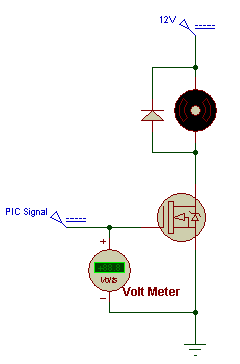 MOSFET transistors are excellent choice for driving high current devices such as motors or high power RGB LEDs. They offer very low switching resistance and very small heat dissipation compared to bipolar transistors. This guide is designed to explain how to drive N-Channel MOSFETs with a microcontroller such as PIC or ATMEGA. Transistors heat up when driving large loads because they have a voltage dropped over them (Vce), and Heat (Watts) = Voltage * Current. This leads to thermal runaway within the transistor, eventually driving the device to destruction if not handled carefully.
FET's are like digital switches, capable of turning on and off between the Drain and Source via a voltage potential at the Gate. When a FET is on, it usually has a resistance of less than 0.01 ohm, and when off, its like an open circuit. Because of the low resistance during the FET's on state, it can allow large amounts of current to pass through it without heating up.
FET's turn on by voltage potential, not an electric current, and in return they have a very high input impedance. With this in mind, you only need a voltage to turn them on, perfect for digital electronics.
Posted on Monday, April 4, 2011 • Category: Miscellaneous
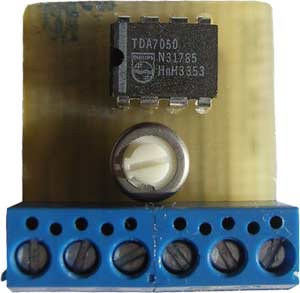 Here's a simple microphone amplifier based around TDA7050 IC. There are many schematics, the choice fell on the amplifier chip TDA7050, the only downside was it that it was not appointed to the microphone. By adding a resistor R1 in the scheme by 4,7 kOhm - amplifier can no longer work with conventional condenser microphones.
If you remove the resistor R3 - the alarm will be put on a small speaker with an impedance of winding 32 Om'a.
Voltage amplifier is powered by 3 - 5 volts, but as the amplifier must be nourished from 12 in the scheme of linear stabilizer was added at 5 V.
This scheme was checked with headphones (current consumption was 50 mA) and connect to the line input of your TV.
Posted on Sunday, April 3, 2011 • Category: Amplifiers
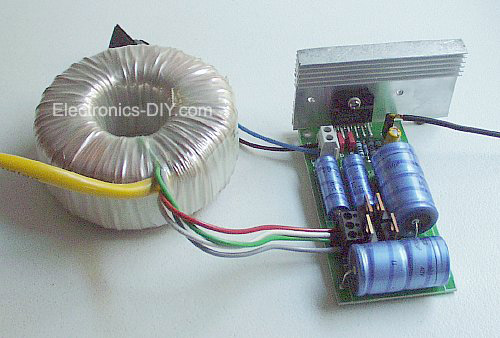 The amp described on this page, is a very simple poweramp based on the National Semiconductor chip LM3875. According to National it's a chip meant for TVs, compact stereos etc. But many people claim that these chips are great high-end amps...
So I decided to try building one. The "design" work was quickly done, as I just used the guidelines and sample circuit of the datasheet. I designed a small PCB for the amp (I'm lazy), and I made it double sided to make it easier to keep all the ground lines separate, as recommended by National.
The prototype board can be seen below with a 100VA toroid I used for testing.
Posted on Sunday, April 3, 2011 • Category: Headphone Amplifiers
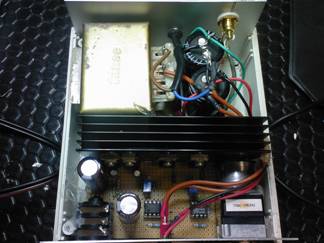 Presented here is a Class A headphone amplifier built around OPA134 opamp and IRF510 MOSFET power transistor as output stage and current driver. Quality, sound engineering applications, the most important criterion. Although many criteria used in the definition of quality for Class A amplifier. The most important feature, new crossover and work conditions and very low intermodulation distortion characteristics of a sound is very close to nature. Audio gurus know very well that the sound of a class A amplifier is the best one you can ever get.
Posted on Saturday, April 2, 2011 • Category: Power Supplies
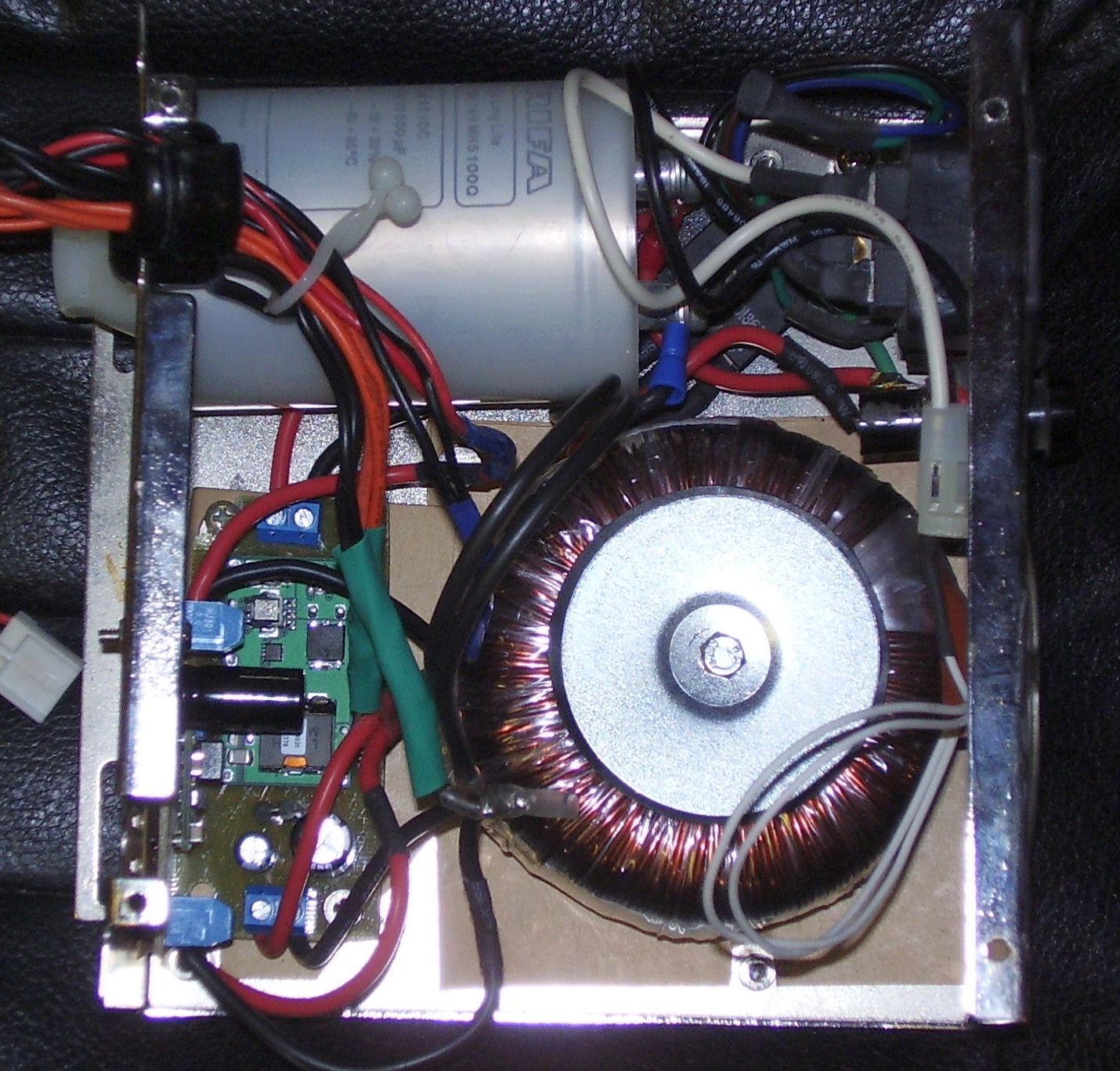 I'm replacing my old power-hog home server with a new one based on the Intel D945GSEJT mainboard. This board is essentially a netbook platform that's been "desktopified". Among it's weirder points are that it uses the Mobile 945GSE chipset, SODIMM ram, 44PIN IDE, and that it runs off a single 12V supply. The reason I chose this board is that it consumes 13W in idle and 18W under full CPU and GPU load which is pretty much the lowest power consumption one can get with an Atom system (excluding some server-specific boards that were beyond my budget). Not wanting to use an ATX PSU I've decided to build a completely new power supply for the board. Not having to bother with all the voltages needed for ATX makes this a lot easier. I've decided to make a high-amp 12V supply, and a 5V supply capable of driving two HDDs.
Posted on Wednesday, March 30, 2011 • Category: Amplifiers
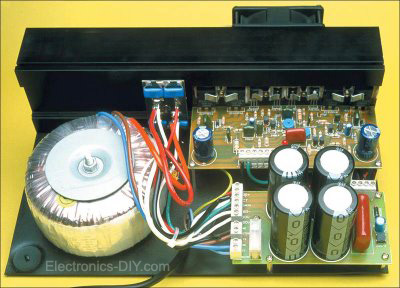 This 200W MOSFET Power amplifier is suitable for many applications such as Guitar Ampplifier, Mic or Home theater.
As many people prefer because of its legendary robustness of MOSFET transistors. MOSFET amplifier is rated at 200W power with 4Ω speakers. It has good frequency range of 1 dB 20Hz up to 80kHz. THD is less than 0.1% at full power and signal to noise ratio when compared to 200W is better than -100 dB unweighted.
Posted on Sunday, March 27, 2011 • Category: Amplifiers
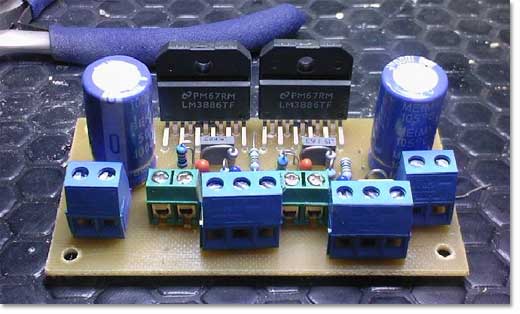 In this application, we are building a gaincard like amplifier. This application type is named gainclone in the audio world. To take a satisfactory audio response, we are adding equalizer to the feedback line and adding bass compensation also.
We are using LM3886 which is the revised version of its brother LM3875. These are the parameters that we are interested in. Honestly this values are much more better than many of HI-FI amplifiers sold in the market. Especially it is hard to find 110dB signal to noise ratio. And another property is, when there is no input, this amplifier is quite like a dead. It is nearly impossible to hear any noise when you stick your ear to the speakers.
Posted on Saturday, March 26, 2011 • Category: LED
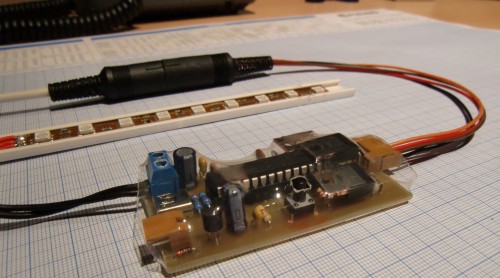 This is great LED-controller board with lots of handy features. USB interface allows selecting operating modes directly on your PC screen without need additional input devices on boars. Project has preprogrammed several modes including slow and fast color change, temperature base color ,where color depends on temperature measured from temperature sensor (DS1821). Other modes include constant colors that can be configured with C# Win application. Actually there are more possibilities of usage especially when USB is used. Write your own or use PC application that would represent CPU load or other content with RGB colors. Project is built around PIC18F2550 microcontroller which comes along with USB interface. So USB requires couple elements what allows focusing on other parts of circuitry.
Posted on Saturday, March 26, 2011 • Category: Miscellaneous
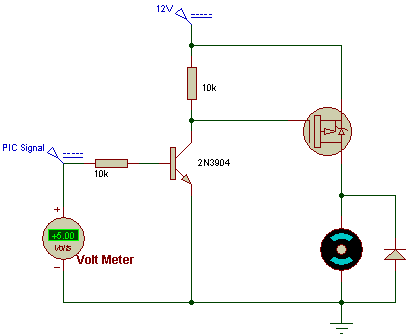 MOSFET transistors are excellent choice for driving high current devices such as motors or high power RGB LEDs. They offer very low switching resistance and very small heat dissipation compared to bipolar transistors.
This guide is designed to explain how to drive P-Channel MOSFETs with a microcontroller such as PIC or ATMEGA. There are a couple of tricks to remember when using them. P-Channel MOSFETs are useful for switching positive supply of a target circuit on and off. Particular attention must be placed to the target circuit if the supply voltage is greater then the micro controller's logic voltages.
If for example, your target device is being powered by 12 volts, and your logic high state from the micro controller is 5 volts, then the MOSFET will never turn off, as voltage will either be -12V or -7V (remember that this guide is designed for logic level MOSFETs). Anything over -3 volts will generally drive the logic level MOSFET on (varies between types of LL MOSFETs).
Circuit-Zone.com © 2007-2025. All Rights Reserved.
|
|
|